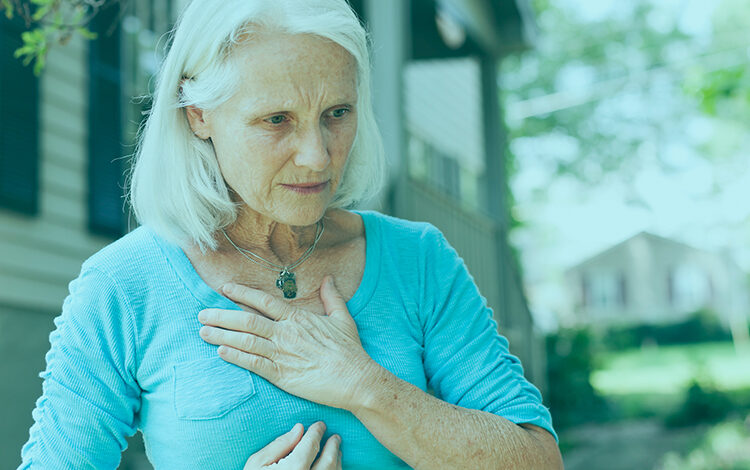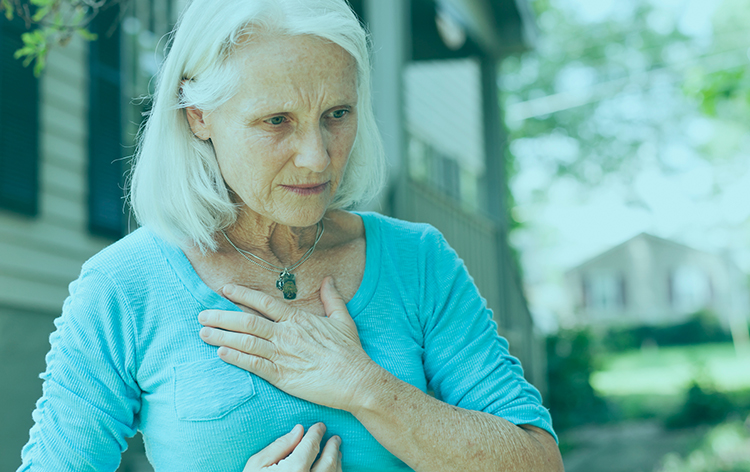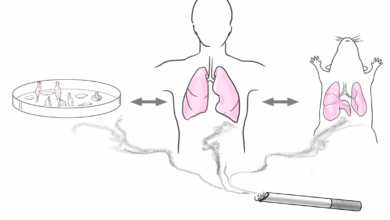
Women suffer more serious symptoms when they get COPD, a critical issue often overlooked. This deep dive explores the distinct experiences of women with COPD, delving into the biological, environmental, and socioeconomic factors that might contribute to these disparities. We’ll examine the varying symptoms, potential contributing factors, and crucial considerations for management and treatment, all while emphasizing the importance of personalized care.
COPD, a progressive lung disease, commonly presents with symptoms like shortness of breath, coughing, and chest tightness. While these symptoms affect both men and women, research suggests women often experience a more severe presentation and a different symptom profile. This difference necessitates a deeper understanding of the specific challenges women face in managing COPD.
Understanding COPD in Women: Women Suffer More Serious Symptoms When They Get Copd
Chronic Obstructive Pulmonary Disease (COPD) is a progressive lung disease characterized by persistent airflow limitation. This limitation is typically caused by damage to the airways and alveoli, the tiny air sacs in the lungs responsible for gas exchange. While COPD affects both men and women, there are notable differences in how the disease presents and progresses, and understanding these nuances is crucial for improved diagnosis and management.COPD’s common symptoms include shortness of breath, chronic cough, and sputum production.
These symptoms often worsen over time, impacting a person’s ability to perform daily activities. The progression varies significantly between individuals, influenced by factors like smoking history, exposure to environmental irritants, and underlying health conditions.
Typical Symptoms and Progression in Women
Women with COPD often experience a more insidious onset of symptoms compared to men. The symptoms may not be as readily apparent in the early stages, potentially leading to delayed diagnosis. Furthermore, women may experience a faster decline in lung function compared to men, especially in those with a history of respiratory infections. This accelerated decline can significantly impact their quality of life and ability to perform daily tasks.
Comparison of COPD Presentation in Men and Women
While the core symptoms of COPD are similar in both men and women, some subtle differences exist. Women may experience a greater prevalence of certain symptoms, like chest tightness and chronic cough, compared to men. They may also report more pronounced anxiety and depression related to their COPD. Men, on the other hand, often exhibit a more pronounced shortness of breath.
These differences are likely influenced by hormonal and physiological factors specific to each gender.
Biological Factors Contributing to Gender Differences
Several biological factors may contribute to the different symptom experiences between men and women with COPD. Hormonal fluctuations throughout a woman’s life cycle, particularly during menstruation, pregnancy, and menopause, could influence the immune response and susceptibility to lung infections. Additionally, women may have a different lung structure and function compared to men, potentially making them more vulnerable to the effects of COPD.
Physiological Differences Affecting COPD
Differences in lung size and structure between men and women can impact COPD progression. Women tend to have smaller lung volumes and a higher surface area to volume ratio in their airways. These physiological differences may contribute to the potential for faster airflow limitation and symptom progression in women. Moreover, women’s smaller airway diameters could be more susceptible to inflammation and narrowing.
Diagnostic Process for COPD: Gender-Related Considerations
The diagnostic process for COPD involves a comprehensive evaluation, including a thorough medical history, physical examination, and pulmonary function tests (PFTs). Physicians should consider potential gender-related factors during the diagnostic process. This includes carefully assessing the patient’s symptom presentation and medical history to identify potential differences in symptom manifestation and progression. Early and accurate diagnosis is crucial to initiate appropriate management strategies.
Consideration of hormonal factors and life-stage events in women could also contribute to a more personalized approach to diagnosis and treatment.
Women often experience more severe COPD symptoms, a fact that needs more research. While we wait for more conclusive studies, it’s important to consider what happens after the omicron wave passes, potentially influencing future health trends. This could affect how COPD manifests and how women respond to the long-term effects, and further highlight the disparities in COPD symptoms between genders.
what happens after the omicron wave passes This underscores the importance of continued monitoring and research into COPD, especially regarding gender-specific impacts.
Severity and Symptom Expression
Women with COPD often experience a more complex and potentially more severe presentation of the disease compared to men. This difference isn’t simply about the symptoms’ intensity but also involves the specific types of symptoms reported and the influence of various factors unique to women. Understanding these nuances is crucial for appropriate diagnosis, treatment, and management.The experience of COPD varies significantly between individuals, and gender plays a role in shaping this experience.
Factors like hormonal fluctuations, pregnancy, and childbirth can influence the progression and expression of COPD symptoms in women. Research suggests that women may experience more pronounced respiratory symptoms, as well as a greater susceptibility to certain complications.
Potential Differences in Symptom Severity
While the exact mechanisms behind gender-based differences in COPD symptom expression are not fully understood, several factors may contribute to the observed disparities. Women may experience a greater frequency and intensity of respiratory symptoms compared to men with COPD. This could stem from differences in lung function, immune response, and other physiological variations.
Frequency and Intensity of Respiratory Symptoms
Women with COPD frequently report experiencing more pronounced shortness of breath, particularly during physical activity or exertion. Coughing episodes might also be more frequent and intense, impacting daily life. The intensity of chest tightness and wheezing can also be more debilitating for women.
Types of Symptoms Reported by Women
Beyond the typical respiratory symptoms, women with COPD may also report additional symptoms such as pain, fatigue, or anxiety. These non-respiratory symptoms can significantly impact their quality of life and should be carefully considered during diagnosis and treatment. For example, chronic pain associated with COPD can be more pronounced in women. This can stem from the unique physiological characteristics of women and how their bodies react to the disease process.
Influence of Pregnancy, Childbirth, and Hormonal Fluctuations
Pregnancy, childbirth, and hormonal fluctuations can significantly impact the progression and expression of COPD symptoms in women. The physiological changes during these life stages can exacerbate existing respiratory problems. For instance, hormonal shifts during pregnancy may lead to increased airway reactivity, intensifying symptoms. Furthermore, the physical demands of childbirth can strain the already compromised respiratory system.
Comparison of Common COPD Symptoms in Men and Women
| Symptom | Men | Women |
|---|---|---|
| Shortness of Breath (Dyspnea) | Moderate to severe, often triggered by exertion. | Often more pronounced, even at rest, and more sensitive to physical activity. |
| Cough | Occasional to frequent, typically productive. | More frequent and intense, potentially impacting sleep quality. |
| Chest Tightness | Moderate, usually associated with exacerbations. | More persistent and can lead to significant discomfort. |
| Fatigue | Common, often related to activity levels. | Potentially more pronounced and impacting daily tasks. |
The table above illustrates potential differences in the severity of common COPD symptoms between men and women. These differences, while not definitive, highlight the need for tailored approaches to COPD management in women.
Potential Contributing Factors
Understanding the complexities of COPD in women requires exploring the multifaceted factors that contribute to its development and progression. While smoking remains a significant risk, other elements play crucial roles, including environmental exposures, genetic predispositions, and socioeconomic disparities. This exploration delves into these interconnected influences to provide a more complete picture of COPD’s impact on women.Beyond the well-established link to smoking, several other factors influence a woman’s susceptibility to COPD.
These factors, ranging from environmental exposures to socioeconomic circumstances, highlight the need for a comprehensive understanding of the disease’s manifestation in women.
Environmental Risk Factors
Environmental exposures significantly contribute to the development of COPD, particularly in women. Air pollution, exposure to certain chemicals, and occupational hazards can all play a role in the disease’s progression. Studies have shown a correlation between long-term exposure to air pollutants, such as particulate matter, and increased risk of respiratory problems, including COPD. Similarly, exposure to dust, fumes, and other workplace hazards in specific industries can also contribute to the development of the disease.
The cumulative effect of these exposures over time can exacerbate respiratory issues and increase susceptibility to COPD.
Genetic Predispositions
Genetic factors may also influence a woman’s risk of developing COPD. While the specific genes involved are still under investigation, research suggests a potential gender-specific interplay between genetics and COPD. Variations in the genetic makeup of women compared to men might contribute to different responses to environmental triggers and the development of the disease. Further research is needed to fully understand these complex interactions.
Smoking Habits
Smoking remains a major risk factor for COPD in both men and women. However, the impact of smoking on women’s respiratory health might differ. While women may be equally susceptible to the damaging effects of cigarette smoke on the lungs, certain factors, such as hormonal differences, may influence the way their bodies respond to the toxins in smoke.
This could result in varying levels of susceptibility and disease progression between genders. For instance, women might experience a faster decline in lung function compared to men after a similar duration of smoking.
Socioeconomic Factors
Socioeconomic factors play a significant role in the prevalence and severity of COPD, especially among women. Factors such as access to healthcare, education levels, and socioeconomic status can influence a woman’s ability to quit smoking, manage symptoms, and receive appropriate medical care. Women in lower socioeconomic brackets may face greater barriers to accessing preventative measures and treatment, leading to a higher prevalence and more severe symptom expression of COPD.
This highlights the importance of addressing socioeconomic disparities to improve COPD outcomes in women.
Research on Gender and COPD Symptom Severity
Numerous studies have explored the relationship between gender and COPD symptom severity. While some studies suggest that women may experience more severe symptoms, including exacerbations and limitations in daily activities, other research shows no significant difference. The inconsistent findings highlight the complexity of the issue and the need for further research to determine the factors contributing to these differences.
This ongoing research is crucial for developing targeted interventions and treatments tailored to the specific needs of women with COPD.
Women unfortunately often experience more severe COPD symptoms, which can be a real challenge. Figuring out healthcare costs and insurance options can be tricky, especially when navigating the complexities of the federal exchange. Navigating the federal exchange can be confusing, but understanding your options is key to managing those more intense COPD symptoms effectively. Ultimately, accessing the right care and support is crucial for women facing these health concerns.
Management and Treatment Considerations

Managing COPD in women requires a nuanced approach, acknowledging the potential for varied symptom presentation and response to treatment compared to men. Recognizing the unique biological and hormonal factors affecting women is crucial for optimizing treatment outcomes and improving quality of life. This necessitates a shift from one-size-fits-all strategies to personalized care plans that address individual needs.Current COPD treatment strategies often rely on standardized protocols.
However, these protocols might not always adequately address the specific needs of women. This underscores the importance of tailoring interventions to individual patient characteristics, including symptom severity, comorbidities, and overall health status. This personalized approach ensures that treatment aligns with the unique experience of women with COPD.
Adjustments to Current COPD Treatment Strategies for Women
Understanding the potential differences in COPD presentation and response to treatment between genders is vital for effective management. Women often experience more pronounced symptoms like anxiety and depression, requiring integrated mental health support. Furthermore, hormonal fluctuations throughout a woman’s life cycle can influence symptom severity and treatment response. This necessitates considering hormonal factors when designing treatment strategies.
COPD Treatment Options and Potential Effectiveness in Women
| Treatment Option | Potential Effectiveness in Women | Considerations |
|---|---|---|
| Bronchodilators (inhalers) | Generally effective in relieving bronchospasm and improving airflow, potentially reducing dyspnea. | Different formulations might be preferred by women due to ease of use and potential for fewer side effects. |
| Inhaled corticosteroids | Can help reduce inflammation and improve lung function. | Careful monitoring for potential side effects like oral thrush is essential. |
| Combination inhalers | Combine bronchodilators and corticosteroids, potentially providing broader symptom relief. | Individualized selection is important, considering potential side effects and patient preferences. |
| Pulmonary Rehabilitation | Improves exercise capacity, reduces symptoms, and enhances overall quality of life. | Tailoring programs to address women’s specific needs and preferences is crucial. |
| Oxygen Therapy | Provides supplemental oxygen to alleviate hypoxemia and improve respiratory function. | Potential for improved symptom management, especially for women with severe COPD. |
This table provides a general overview; specific effectiveness can vary greatly among individuals.
It’s crucial to remember that women often experience more severe COPD symptoms than men. This underscores the importance of checking in on your new mom friends, as they might be experiencing some of these difficulties, often unnoticed. It’s a sensitive issue, but supporting them through this, as highlighted in this helpful guide on why you should check on your new mom friends , can make a real difference in their well-being and help them navigate the challenges of motherhood and health concerns, which is also true for COPD symptoms.
So, keep an eye out for subtle changes and offer support if needed.
Importance of Individualized Care Plans for Women with COPD
Individualized care plans are paramount for women with COPD. These plans should consider factors like age, hormonal status, lifestyle, and presence of comorbidities. This personalized approach ensures that treatment aligns with the unique experience of women with COPD. For instance, a woman experiencing menopausal symptoms might benefit from a treatment plan that includes hormone therapy in conjunction with standard COPD medications.
Impact of Comorbidities on COPD Management in Women
Comorbidities significantly impact COPD management in women. Conditions like asthma, cardiovascular disease, osteoporosis, and anxiety are frequently seen in women with COPD. These conditions can affect symptom severity, treatment response, and overall health. For example, a woman with COPD and osteoporosis might require a modified exercise program to avoid fracture risk. Careful assessment of comorbidities and their potential impact on treatment strategies is essential for successful COPD management in women.
Need for Greater Awareness Among Healthcare Providers Regarding Potential Gender-Specific Differences in COPD
Healthcare providers need greater awareness of potential gender-specific differences in COPD. This awareness includes recognizing that women may experience more severe symptoms, have different responses to treatment, and present with varied comorbidities. Increased education and training for healthcare professionals are crucial for ensuring that women with COPD receive the most appropriate and effective care.
Illustrative Case Studies

Understanding COPD in women requires careful consideration of individual experiences and potential differences in symptom presentation compared to men. This section presents hypothetical case studies to illustrate these points, focusing on symptom expression, diagnosis, and management. These examples are intended to highlight the importance of personalized care and gender-specific considerations in COPD.
Hypothetical Case Study of a Woman with Severe COPD Symptoms
A 65-year-old woman, Sarah, presents with progressive shortness of breath, particularly during exertion. She experiences frequent coughing, often producing phlegm, and chest tightness. Her symptoms worsen in the winter months and are associated with increased fatigue and a reduced ability to perform daily activities. Sarah’s medical history includes a history of smoking for 40 years, and she reports experiencing more severe exacerbations than her peers.
Hypothetical Case Study of a Man with Similar COPD Symptoms
A 68-year-old man, David, exhibits similar symptoms to Sarah, including shortness of breath, coughing, and chest tightness. He also reports fatigue and decreased activity levels. David’s medical history includes a 35-year history of smoking. While his symptoms are similar in nature to Sarah’s, the severity and frequency of exacerbations appear to be less pronounced.
Comparison of the Two Cases, Women suffer more serious symptoms when they get copd
While both Sarah and David present with similar COPD symptoms, subtle differences in symptom expression and management could arise. Sarah’s more pronounced exacerbations and increased fatigue might suggest a more severe underlying disease process or potential co-morbidities. Differences in symptom presentation and response to treatment could necessitate tailored approaches.
Case Study Illustrating Gender-Specific Considerations
A 55-year-old woman, Emily, presents with a slower progression of COPD symptoms compared to her male counterparts. Initially, her symptoms were attributed to a common cold. Due to her delayed diagnosis, she experienced a more advanced stage of the disease before receiving the appropriate management. This case highlights the importance of heightened awareness and proactive screening for COPD in women, considering potential differences in symptom presentation and disease progression.
Summary Table of Key Differences
| Characteristic | Sarah (Woman) | David (Man) | Emily (Woman – Delayed Diagnosis) |
|---|---|---|---|
| Symptom Severity | More severe exacerbations, increased fatigue | Less severe exacerbations, less pronounced fatigue | Initially mild, attributed to common cold |
| Symptom Progression | Potentially more rapid | Potentially slower | Delayed diagnosis, advanced stage at diagnosis |
| Management | Potential need for more aggressive treatment strategies | Potential for less aggressive treatment strategies | Delayed treatment, resulting in more advanced stage requiring more intensive treatment |
| Diagnosis | Potentially more challenging due to symptom overlap with other conditions | Potentially easier to diagnose due to typical symptom presentation | Delayed diagnosis due to misinterpretation of symptoms |
Final Conclusion
In conclusion, the differing experiences of women with COPD underscore the need for a more nuanced approach to diagnosis, treatment, and management. Recognizing the unique biological and social factors affecting women is paramount. By understanding these differences, healthcare providers can better tailor care plans to meet the specific needs of women with COPD, ultimately improving their quality of life.





